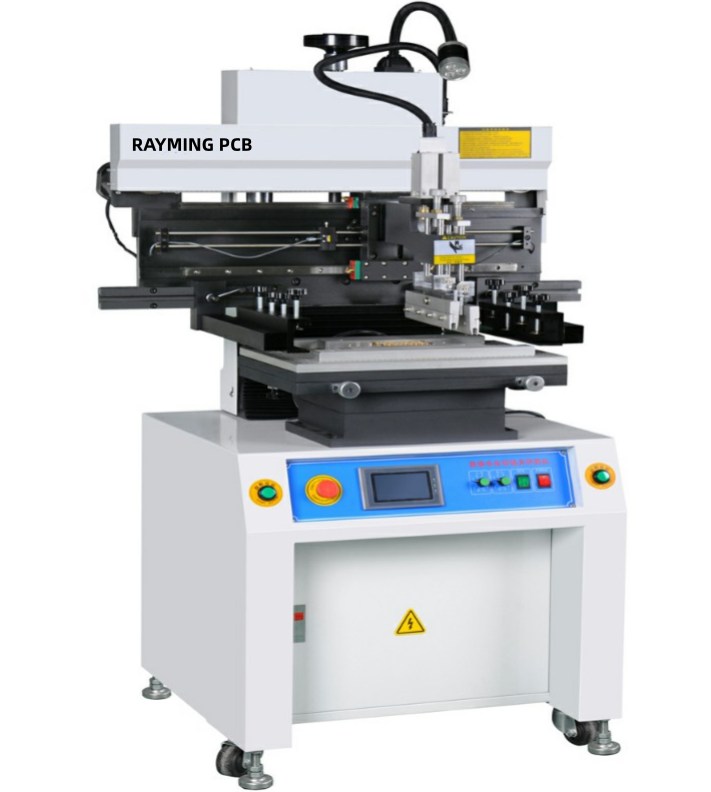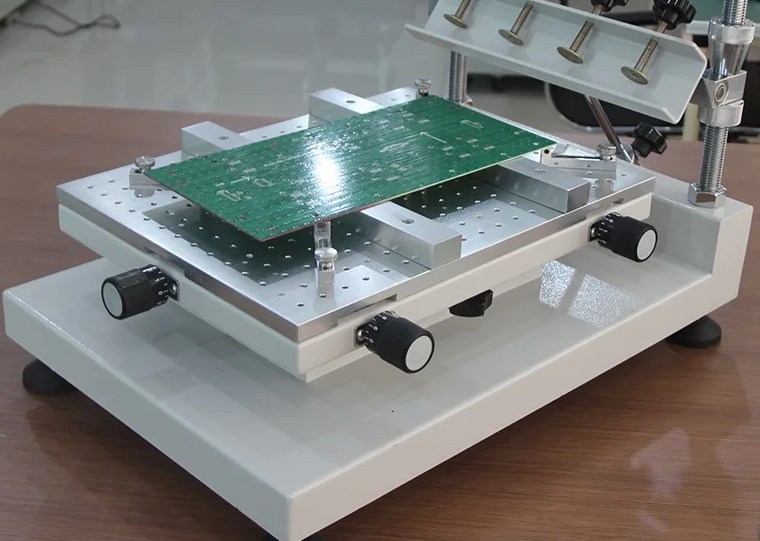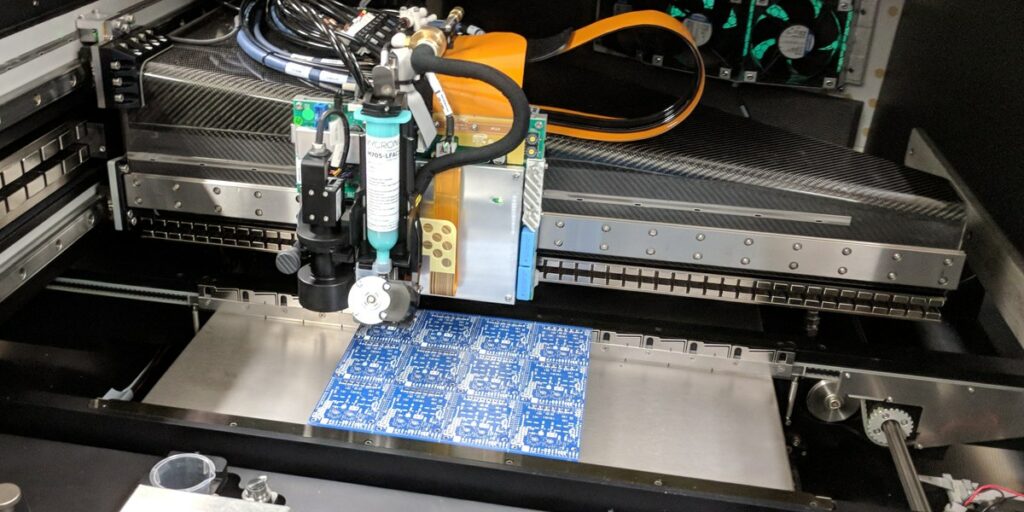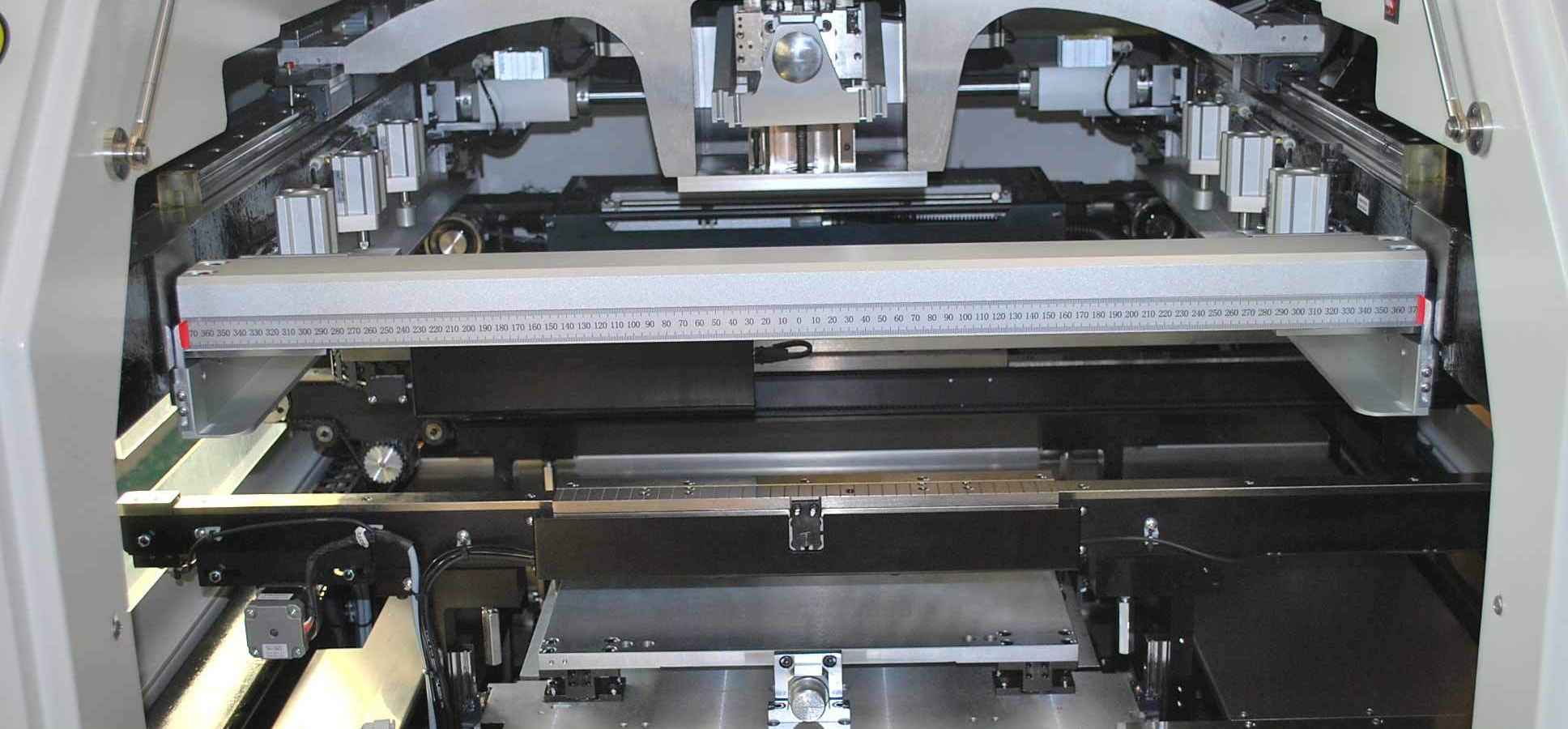Solder paste printing constitutes a pivotal first step in the surface mount assembly process workflow responsible for accurate and repeatable transfer of solder paste from stencil to PCB pads, governing subsequent solder joint quality.
With shrinking component sizes, finer pitches and tighter tolerances becoming prevalent, selection of an appropriately precise solder paste printer matched to product requirements is vital for maximizing SMT line yield and minimizing defects.
This article explores leading edge high-precision solder paste printer models for SMT lines encompassing working principles, dispenser types, feature comparisons, evaluation criteria and recommendations.
Need for Precision Solder Paste Printers
High print deposition precision enables assembly success and downstream quality for advanced packages including:
MicroBGAs: Ultra-compact footprint sizes below 0402 with sub 100 μm pads needing microscale paste deposits.
01005 Components: Minuscule 0402 metric chips with sub-250 μm features demand ultrafine paste dot regulation.
Wafer Level Chip Scale Packages (WLCSP): Near-bare die formats with tight pad spacing below 150 μm risk bridge faults without print accuracy.
Flip Chips: Tight bump pitches down to 130 μm on dies mandate paste uniformity for securing delicate chips.
High Density Interposers: Complex interposer structures with high I/O fanout connecting multiple logic/memory stacks require interim paste stability.
Thus, various emerging packaging trends drive paste print precision down to ≤50μm control levels necessary for next-gen products.
Key Considerations for Precision Printing

Achieving fine tolerance paste dispensing involves interplay between multiple equipment factors:
Stable Materials Delivery
Consistent solder paste viscosities, optimized volumes per printed board area, and frequent replenishments are vital for mitigating variations.
Robust Framing/Foils
Minimal print-zone pressure gradients using sturdy frames providing uniform foil tensioning prevent shifts. Step-down stencil topologies boost stability.
Advanced Vision Systems
High magnification/resolution print process monitoring cameras equipped with sophisticated feature recognition algorithms enable real-time image analysis for alignment, presence and shape verifications.
Precision Motion Control
High-end position encoder feedback and tightly calibrated acceleration/deceleration profiles ensure micron-level accuracy in PCB table placements relative to paste dispense stations preventing skew.
Environment Stability
Maintaining steady thermal and humidity levels in SMT shopfloors using active conditioning prevents paste viscosity changes and stencil/substrate dimensional fluctuations that deteriorate deposit fidelity.
Automated Inspection Post-print offline vision-based paste height, area ratio, pad coverage metrics quantification against limits coupled with automated repair dispatch capabilities elevate outcome consistency.
Working Principle of Solder Paste Printers
Solder paste printers operate on the principle of mediating precise paste transfer from stencil apertures onto PCB surfaces by:
Step 1: Loading solder paste beads over stencil attached to printing frame/tooling using Foil mount fiducials
Step 2: Menu-driven setup of print speed, gap, stroke, separation and squeegee pressure parameters
Step 3: X-Y table moves PCB to index first site target location under stencil guided by board fiducials vision alignment
Step 4: Squeegee blade traverses applying calibrated pressure to fill apertures andcreating imprints on pads
Step 5: Programmed separation plate lifts stencil off separated prints for inspection
Step 6: Machine automatically handles board unload, stencil underwipes and next PCB load cycles
This synchronized sequence achieves process control and repeatability across prints.
Different Solder Paste Dispenser Types
Deployment of advanced solder paste deposition heads integrated into printers provides paste bead application onto stencils and subsequent transfer to boards in fine-tuned, flexible ways:
Pneumatic Dispensing
Programmable air pressure levels and timing sequences drive precision syringe barrels to extrude paste through shaped nozzles onto substrates in dot, line or bead formats. Cost-effective, versatile across viscosities.
Rotary Screw Drives
Rotating screw element coupled to stepper motors pushes paste reservoir contents out steadily. Excellent for low to medium viscosity fluids dispensing wide volumes. Handles varying paste densities well.
Piezoelectric Micro-Jetting
Stimulates piezoelectric crystals with tuned RF signals to generate pulses squeezing paste through miniature nozzles providing wide dynamic ranges down to pico-liter deposits. Excellent response linearity across paste rheologies. Wider viscosity range flexibility from 0.01-1000 Pa-s enabling finer lines, dots or complex multilayered deposits.
Molded Underfill Dispensing
For advanced packaging like WLCSPs, molded underfills applied precisely over stacks using microdots prevent solder extrusion faults while enhancing thermal cycling reliability compared to capillary flows.
While all heat-free, contactless application methods provide key benefits, only non-contact jetting approaches offer both fine feature sizes below 100 μm and a wide viscosity range suiting high mix scenarios.
High Precision Printer Models Comparison

Feature Benchmarking
| Model | Accuracy | Vision | Dispenser | Stencil | Software | Price |
|---|---|---|---|---|---|---|
| Mycronic MY550 Jet | ±35 μm | Triple | Piezo Jetting | Framed | SCADA | $$$$ |
| ASM DEK NeoHorizon 03iX | ±25 μm | Dual | Pneumatic | Frameless | Controls Suite | $$$ |
| Juki RM-XS v1 | ±30 μm | Dual | Piezoelectric | Framed | IntelligentGB | $$$ |
| Panasonic MT-558 | ±50 μm | Twin | Pneumatic | Framed | iPrint3D | $$ |
| Ersa EASYSCREEN | ±50 μm | Single | Rotary Screw | Framed | SolderSmart | $$ |
High-end printers leverage advanced vision coupled with precision piezojet/pneumatic dispensing onto framed stencils achieving overall 25-50 μm accuracies demanded by cutting-edge packages. Frameless foil machines compromise stability for low-mix flexibility. Mid-range printers balance cost versus performance for general SMT with looser tolerances above 50 μm.
Evaluating Solder Paste Printers
New SMT line printer selections warrant scrutiny across below aspects:
Compressed Setups
Equipment takes minimal floor space fitting available shop environments while providing access for operations.
Quick Changeovers
Altering printing configurations or switching paste/PCB/stencil types facilitates fast product changeovers and flexibility.
Stable Materials Handling
Integrated cooling, vacuum/pressure units on printer deck maintain paste viscosity, stencil clamping stability for consistent transfer properties.
Dispenser Tunability
Wide deposition parameter adjustability enables addressing varied paste types and rheological properties preventing jetting faults.
Scalable Platform
Upgradable vision, motion control or dispense modules ensure extending capabilities for future needs cost-effectively.
Smart Data Analytics
Collects printing process signatures and images enabling advanced analytics to derive actionable optimization inputs minimizing excursion risks through predictive insights.
While initial equipment capital costs are important, TCO involving running expenses, yield sustainability, rework reductions and ramp-up times determine overall ownership experience. Hence factoring benefits beyond upfront price tags based on total operational requirements helps ascertain printer ROI accurately.
Recommended Printer Models
Entry-Level: Ersa Easyscreen, Panasonic MT-558
Reliable workhorses covering moderate-tolerance processes with framed stencils using mature pneumatic/screw dispensing ensuring basic print needs economically.
Mainstream: Juki RM-XS v1, ASM DEK NeoHorizon 02iX
Step-up piezojetting or precision pneumatic printing with advanced 2D corrections and material handling systems balancing performance and cost.
High-Precision: Mycronic MY550 Jet, ASM DEK 07iX Cutting edge piezoelectric microdispensing coupled with closed loop vision and motion delivering ultrafine 25 μm control necessary for emerging ic packages with minimal defects driving maximum utilization.
FAQs

Does solder paste printing need stencil underside cleaning?
Yes, mandated. Periodic underside wiping after a preset quantity of print strokes prevents apertures clogging restoring paste release efficiency. Stencil underside nano-coatings using Avient VersaTech dramatically increase cleaning intervals.
How to maintain printing yield over stencil life?
Key measures extending process capability involve frame tension monitoring, Foil nanocoatings, visual inspection of aperture quality and prompt underside wiping every few hundreds strokes. This sustains release efficiency and minimizes print defects across stencil reuse lifetime before replacement.
What makes solder paste smear on PCBs?
Prime reasons are excessive separation speeds allowing paste dots lateral spread, poor paste tackiness, uneven PCB topologies preventing clean snap-off, inadequate stencil tensions or frames allowing foil-board contacts causing surface smearing demanding parameter tuning.
Is paste roller suitable for printing fine-pitch ICs?
Using roller coating methods for paste application provides insufficient control over deposit volumes and is prone to bridging risks versus stencil printing, especially for fine-pitch ICs below 0.4 mm. Stencils remain most viable for microtransfer needs.
Can solder paste be stored at room temperature?
No, paste stored at ambient temperatures undergo viscosity changes with powdered alloy particles settling excessively affecting transfer properties. Recommended storage is at 2–10°C with minimal thermal cycling. Shelf lives up to 4–8 weeks at frozen temperatures below 0°C based on the formulation.
In summary, advanced solder paste printers integrating framed tooling, high-fidelity vision feedback and precision deposition with software analytics provide a versatile platform enabling reliable printing at under 50 μm tolerances essential for cutting-edge packaging applications with shrinking geometries.





